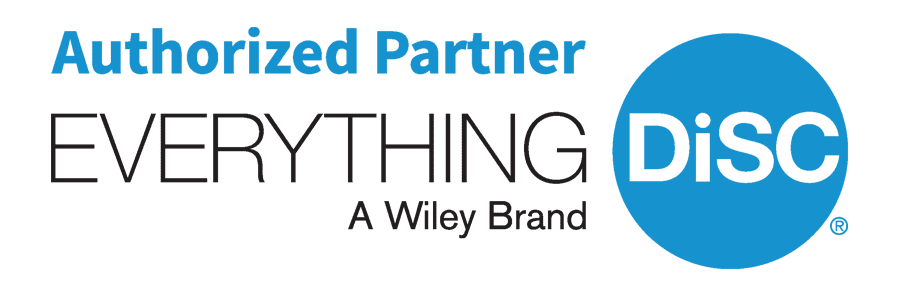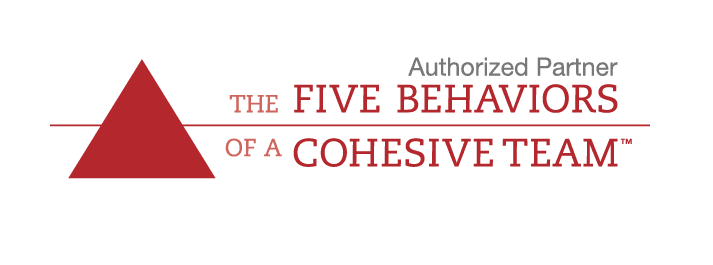Executive Coaching with DiSC Classic and Team Dimensions Profile
DiSC Classic also proved helpful..... Comparing his behavioral style with those of his co-workers was a breakthrough for the executive, who saw for the first time how to communicate better with his peers.
Case Study: Executive Coaching with DiSC Classic and Team Dimensions Profile
DiSC Classic and the Team Dimensions Profile provided non-critical insights into motivators and preferences in the workplace. It showed that we can be different and yet not flawed.
It is difficult to imagine a person more primed for success than the young executive who saw himself as the future CEO of a Fortune 100 company. He was smart, competent, confident, and determined. His organization was thrilled with his performance, and his future seemed boundless.
“But he didn’t like his job at all,” says the consultant. “He felt stuck.”
Despite all appearances, the executive was unhappy with his career trajectory. So he hired a consultant to coach him on how to get his working life back on track. The consultant admits that it is rare for an individual to pay out of pocket for coaching services, but he says that this illustrates just how serious the young man was about his potential.
“He saw it as an investment in his career,” the consultant says. “He knew that open-ended coaching could help him achieve his goals.”
The first thing the consultant had to do was pinpoint what problems his client faced at work. The consultant discovered that the executive had frequent arguments with his superiors and expressed clear discomfort in team settings. In addition, the executive felt swamped because he believed that he had to do everything himself. Finally, he often tuned people out or ignored them, leading to a reputation among peers that he was condescending or arrogant.
“He was a very sharp person,” the consultant says. “But he came across as a know-it-all.”
DiSC Classic also proved helpful; Comparing his behavioral style with those of his co-workers was a breakthrough for the executive, who saw for the first time how to communicate better with his peers.
Obviously, the executive had taken no effort to get to know his colleagues, nor did he understand their preferences. But there were other underlying causes for his problems. For starters, he didn’t know his own behavioral style or role. He also had great difficulty delegating tasks, and the team process was a total mystery to him. Perhaps most important, however, was that he was floundering in an incompatible work environment.
“His department did not nurture creativity and was hostile to change,” the consultant says. “He was a dynamic person who wanted to try new things. At every step he faced a lot of resistance.”
The consultant talked with his client about career stagnation and its possible solutions. Placing the executive’s needs at the forefront meant that the consultant avoided using a preset system or random set of instruments.
“I always talk to the person first and then come up with a solution,” the consultant says. “Depending on the situation, I make a judgment call about the best approach.”
The approach that the consultant devised was to develop the executive’s communication skills and teach him about his behavioral style. He also wanted his client to learn about his colleagues’ behavioral patterns. Of course, another objective was to find a conducive environment for the executive’s talents and drive.
“The company had pockets of greatness,” the consultant says. “We just had to find the right fit for him.”
To help achieve this goal, the consultant administered a DiSC assessment, then discussed the profile’s results with the client, paying special attention to its insights about motivation and preferences. The executive quickly comprehended the DiSC model and its usefulness to his work situation.
“He understood why a high C acted a certain way and how come he was not like that,” the consultant says. “And it helped him accept that this was not a flaw.”
DiSC Classic also proved helpful when the consultant had some of the executive’s colleagues respond to the profile. Comparing his behavioral style with those of his co-workers was a breakthrough for the executive, who saw for the first time how to communicate better with his peers.
“If it’s possible, it’s good to look at the team members’ information to help the client learn how to be more effective with those particular styles,” the consultant says.
With this insight fresh in his client’s mind, the consultant shifted the discussion into an analysis of productive teamwork. For this portion of the coaching, the consultant administered the Team Dimensions Profile to the executive, who again quickly picked up on the profile’s applications.
The client learned about his strengths and weaknesses in a team setting, and he saw how he fit in with his colleagues. Because the executive had been particularly uncomfortable working with others, the profile’s results were enlightening to him.
“He became aware of the different approaches that people have in teams,” the consultant says. “It helped him not only understand himself but the culture of his team.”
Throughout the coaching, the executive learned more about his own behavior. He also saw how others perceived him, which helped him understand the reasons for miscommunication in the past. These insights, along with his new ability to identify his colleagues’ styles and roles, helped the client become more effective when dealing with others. As a result, the executive is now less self-centered, which the consultant says can only improve communication.
These insights, along with his new ability to identify his colleagues’ styles and roles, helped the client become more effective when dealing with others.
“Now he pays attention to others’ needs rather than just his own,” the consultant says. “He used to be really focused internally, but now I see him focused externally. He’s also a much better listener.”
The new insights also helped the executive come to a powerful conclusion: His environment was a complete mismatch and he had to move on. He realized that he required a creative setting, and his department would never be that. In addition, even if such a radical organizational change were possible, the executive was not the person to create it.
“His interaction with his coworkers had become negative,” the consultant says. “It wasn’t all their fault either. He realized that he had failed to gain their trust before he tried to make big changes.”
So the executive made the difficult choice to transfer to a new department within the same organization. The hope was that a fresh start, aided by the development of his communication skills, would be the match that he was looking for. The consultant says that is exactly what happened.
“He’s very pleased with his new position,” the consultant says. “And his new manager is thrilled with his progress.”
The executive immersed himself in the creativity that he needed. And he used his improved communication skills to work more efficiently with his new colleagues. One of the most positive developments was the executive’s increased ability to delegate when necessary.
“In his old job, he could not say no,” the consultant says. “He would take on too much and stress himself greatly. But with more knowledge of himself and the team process, he got a lot better.”
Rather than merely settling for a successful transition, however, the consultant continued to work with the executive to keep his skills sharp. They established an action plan for continued improvement and decided to set new goals every few months. the consultant also met with his client’s new boss to discuss ways in which the executive could hone his talents.
The result of the consultant’s coaching and the profiles’ insights was a young executive who regained his motivation to excel. And the client’s organization was also a beneficiary, as a talented worker finally began using his strengths to help the company.
“It’s a perfect fit,” the consultant says.
Download PDF of Case Study: Executive Coaching with DiSC Classic and Team Dimensions Profile.
Products Used




Recommended Substitutions

![]()
Related Case Study
Using Everything DiSC Management and Comparison Reports with a Leadership Team
Communication problems, interpersonal conflicts and trust issues for leadership team are improved using the Everything DiSC Management Profile and Comparison Reports.
Research Report
From DiSC® Classic To Everything DiSC®
How My Graph Became a Dot.




